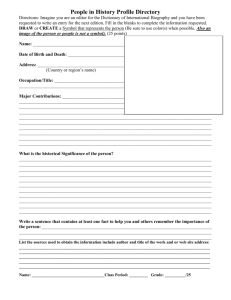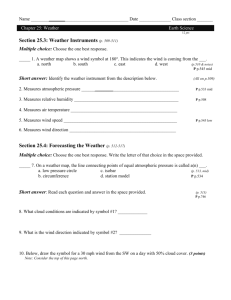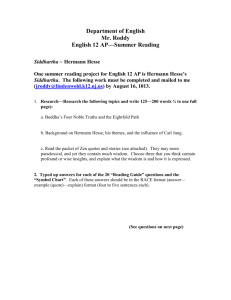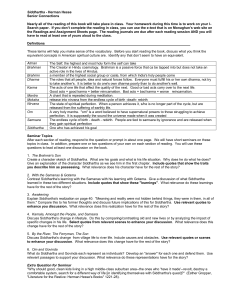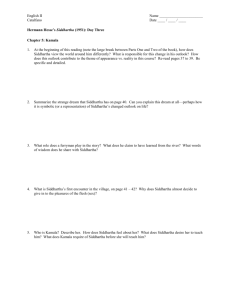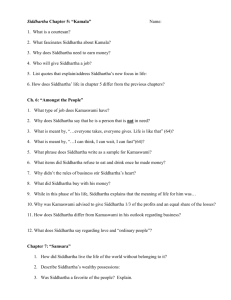AP Literature: Open-ended Question Practice
advertisement
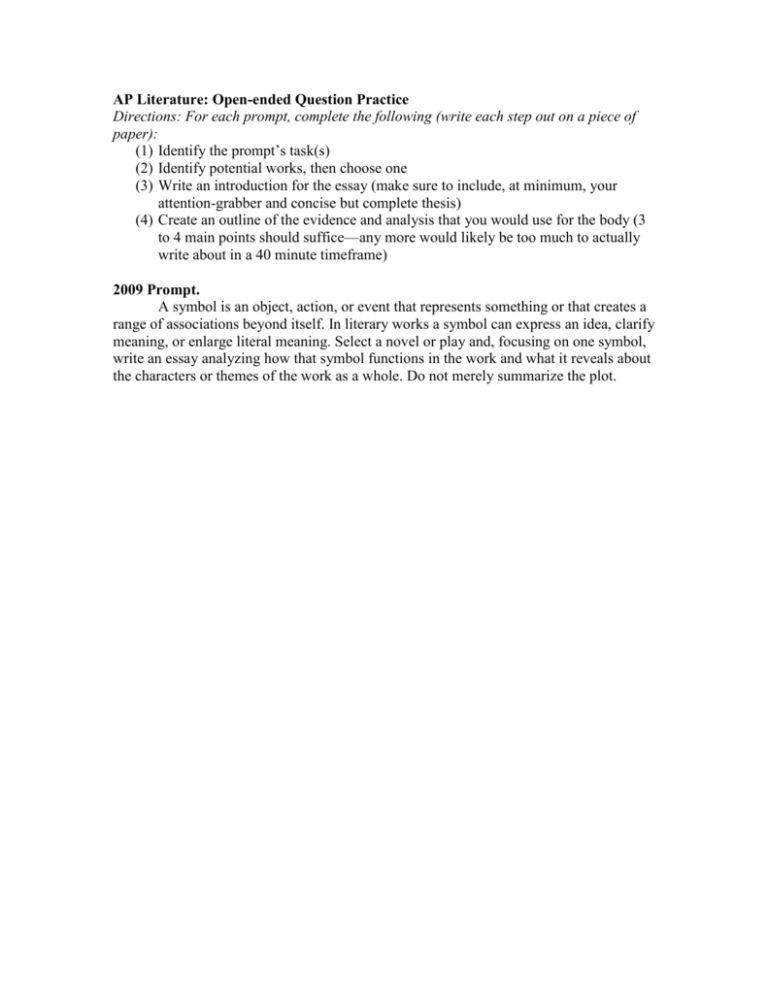
AP Literature: Open-ended Question Practice Directions: For each prompt, complete the following (write each step out on a piece of paper): (1) Identify the prompt’s task(s) (2) Identify potential works, then choose one (3) Write an introduction for the essay (make sure to include, at minimum, your attention-grabber and concise but complete thesis) (4) Create an outline of the evidence and analysis that you would use for the body (3 to 4 main points should suffice—any more would likely be too much to actually write about in a 40 minute timeframe) 2009 Prompt. A symbol is an object, action, or event that represents something or that creates a range of associations beyond itself. In literary works a symbol can express an idea, clarify meaning, or enlarge literal meaning. Select a novel or play and, focusing on one symbol, write an essay analyzing how that symbol functions in the work and what it reveals about the characters or themes of the work as a whole. Do not merely summarize the plot. (1) 1. Select a novel or play; 2. Select one symbol from it; 3. Analyze (a) how the symbol functions in the work, (b) what the symbol reveals about the characters or themes of the work as a whole (2) Siddhartha (river); The Great Gatsby (green light; eyes of Dr. TJ Eckelburg); Othello (handkerchief); Lord of the Flies (conch shell). Selection: Siddhartha’s river. (3) (note: The definition intro and quotation intros are two of my usual go-to’s; the action/image intro is usually a pretty good option as well) They say the pen is mightier than the sword, and for many writers, the symbol is the sharpest blade available. Poets, playwrights, and novelists alike often use a variety of symbols to communicate their insights and themes with elegance. Although these symbols can prove frustrating for some readers (why can’t they just say what they mean!?), many others, this reader included, find the device to be integral to creating an intriguing and memorable work of literature. Herman Hesse, author of Siddhartha, certainly seems to subscribe to this latter mindset; in Siddhartha, one of his most famous and tightly crafted novellas, Hesse utilizes the symbol of the river to represent the work’s themes regarding the timelessness of existence and the unity of all beings. (4) 1. Analyze how the symbol functions in the work a. Where and when Siddhartha first encounters it, in the context of the work. b. Where and when Siddhartha later encounters it, in the context of the work. i. What the symbol reveals to Siddhartha (this is both character and theme related). About the timelessness of existence (put your foot in the river, but river always changing). The river is a river, but it is also an insight into the connections between our personal experiences in time, both positive and negative, and the necessity of all these experiences. ii. What the symbol reveals to Siddhartha (both character and theme) about the unity of all beings. Leads to his final epiphany and enlightenment. The river is a river, but it is also the connection of all creatures great, small, friend, and foe. Only when we realize that everyone we encounter in life is a necessary part of our journey and someone to learn from will we achieve our own personal enlightenment.




